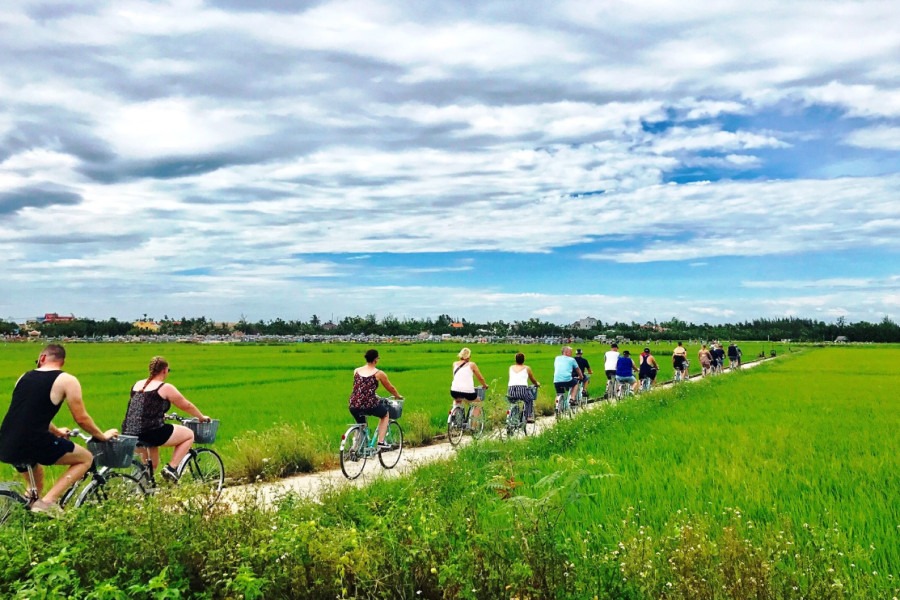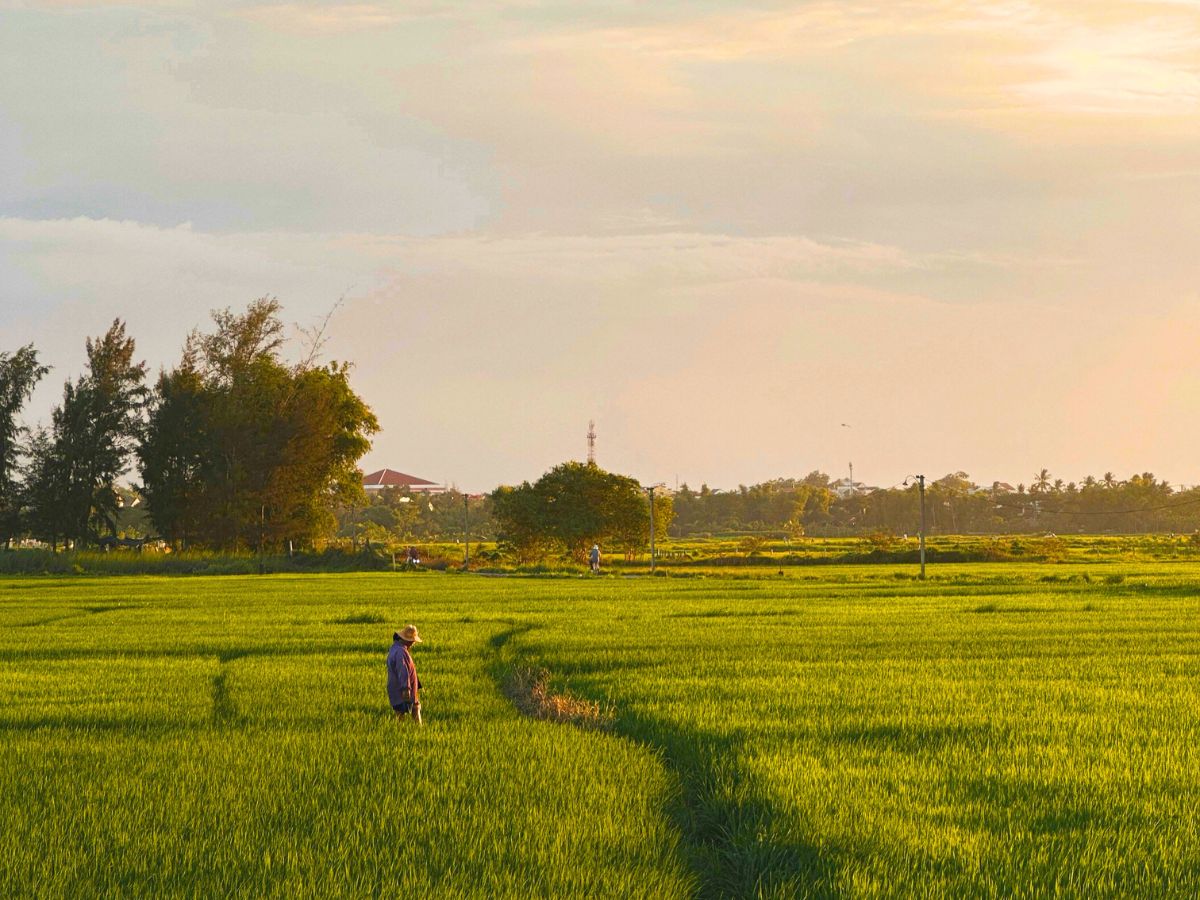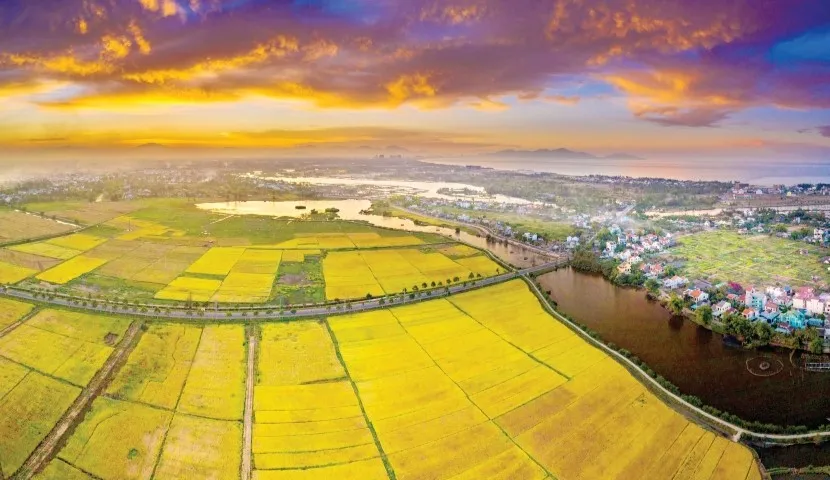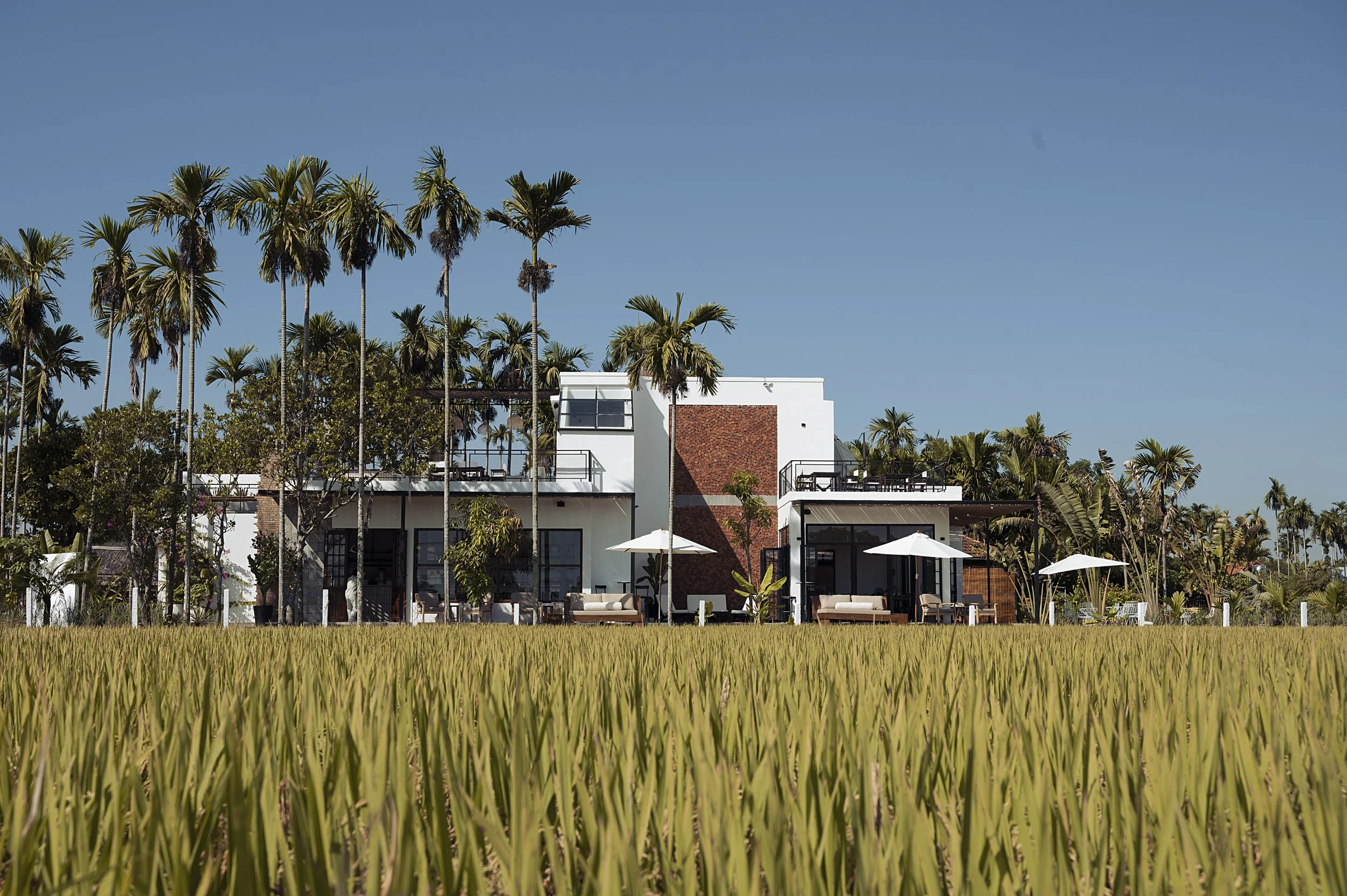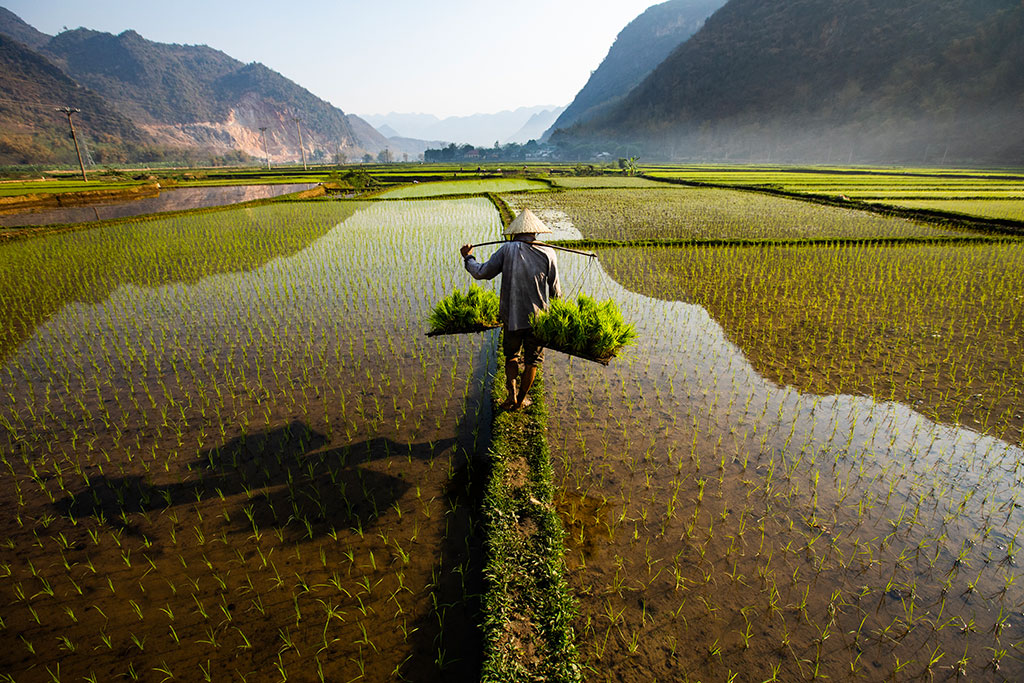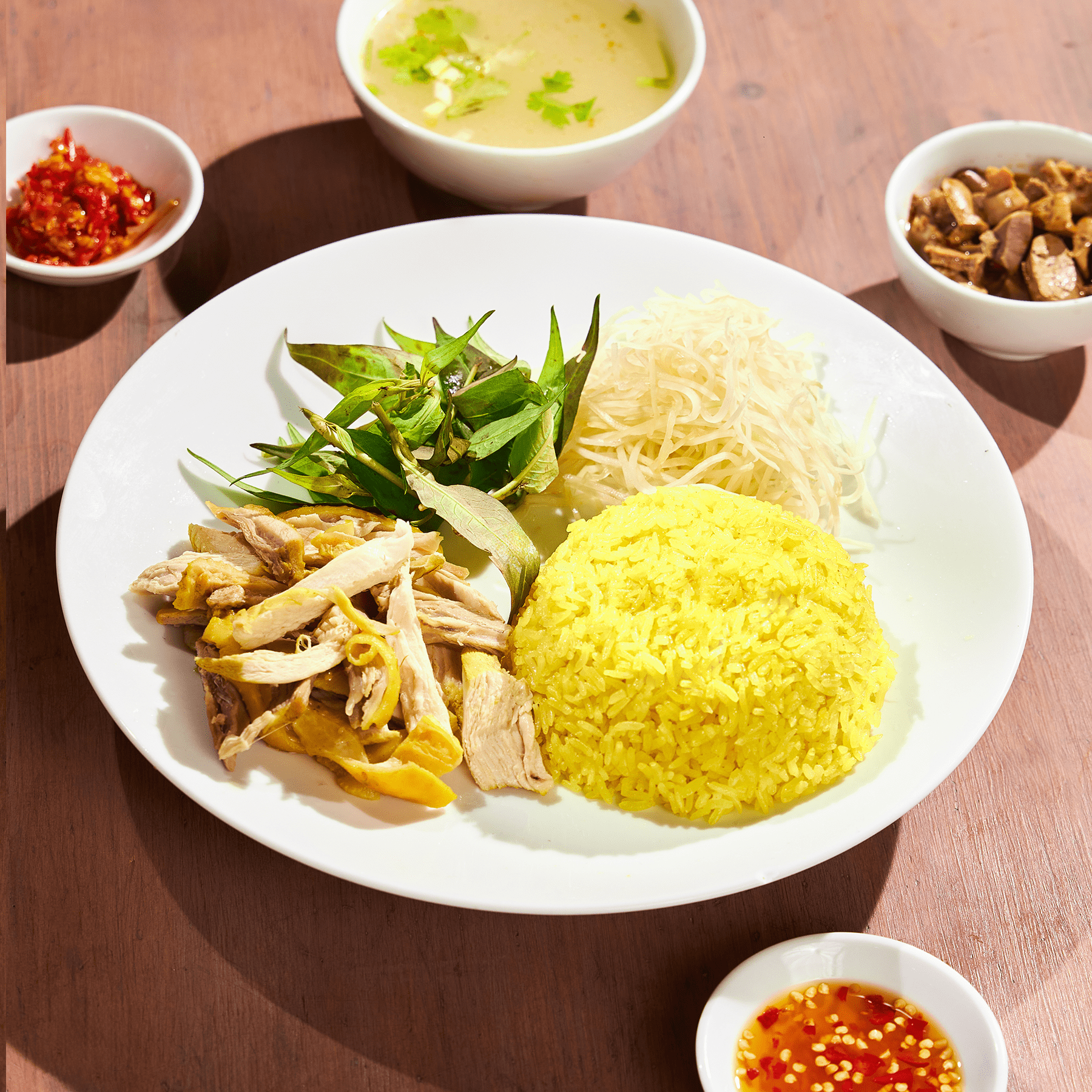DISCOVER WHEN HOI AN’S RICE PADDIES ARE AT THEIR GREENEST, WHERE TO RELAX WITH A COFFEE AMONG THE FIELDS, AND HOW TO EXPLORE THEM ON THE FUSE BIKE TOUR.
Table of Contents
Hoi An isn’t just about lanterns and ancient streets — it’s surrounded by lush rice fields that change with the seasons, creating a living, breathing landscape that shifts from vibrant green to golden yellow throughout the year. Whether you’re visiting for photos, slow mornings with coffee, or a countryside bike ride, timing your trip right can make all the difference.
In this guide, we’ll explore the rice-growing seasons in Hoi An, the best time to visit, where to enjoy the view, and how to experience it all with FUSE Hostels & Travel — one of the best hostels in Hoi An for solo travelers and adventure seekers alike.
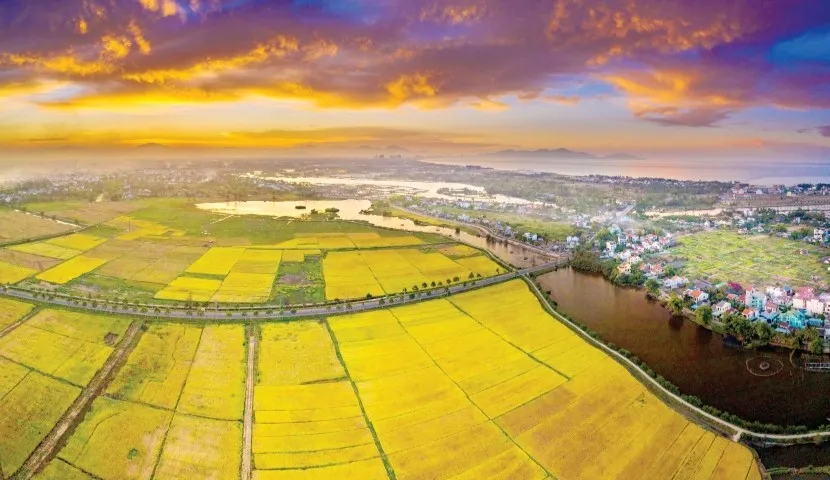
Hoi An Rice Seasons – A Quick Timeline
Hoi An’s rice fields go through two main growing cycles each year, each bringing its own character and color to the landscape.
January to March – Early Planting & Green Shoots
After the Lunar New Year, farmers begin planting new rice crops. The fields are flooded and shimmer like mirrors under the sun. As seedlings sprout, the paddies turn into soft shades of green. This is one of the most peaceful times to see local life — farmers planting by hand, water buffaloes grazing, and the countryside slowly coming alive again.
April to June – Peak Green Season
By April, the fields are at their greenest. The paddies stretch endlessly, glowing under the morning light — a dream for photographers and cyclists. If you’re visiting during these months, aim for sunrise or sunset to catch the golden reflection on the water. This period is also when the FUSE Bike Tour offers some of its most scenic countryside rides.
July to August – Harvest Season
The fields shift from bright green to golden yellow. Farmers begin harvesting, cutting, and drying rice in the sun. It’s a busy but beautiful time, with the smell of straw in the air and traditional rice-threshing happening all around. If you’re lucky, you might even catch locals singing folk songs while working — a glimpse into authentic rural Vietnam.
September to November – Second Crop & Rainy Season
After harvest, fields are replanted for the second crop. Expect occasional rains and cloudy skies, but don’t be discouraged — the mist over the paddies creates a soft, cinematic atmosphere. This is also a quieter time to visit Hoi An if you prefer fewer crowds.
December – Dry Season Transition
By December, the second harvest wraps up. The air cools, and the fields start drying. It’s an ideal time for cycling, photography, and exploring before the busy holiday season begins.
Best Time to Visit the Rice Fields in Hoi An
If you want to see the fields at their greenest, plan your trip from late March to early June.
For the golden harvest look, July to mid-August is perfect.
During these months, weather conditions are favorable for biking, photography, and outdoor adventures. Sunrise (around 5:30 AM) and sunset (around 5:30–6:30 PM) are the best times to catch the light and cooler temperatures.
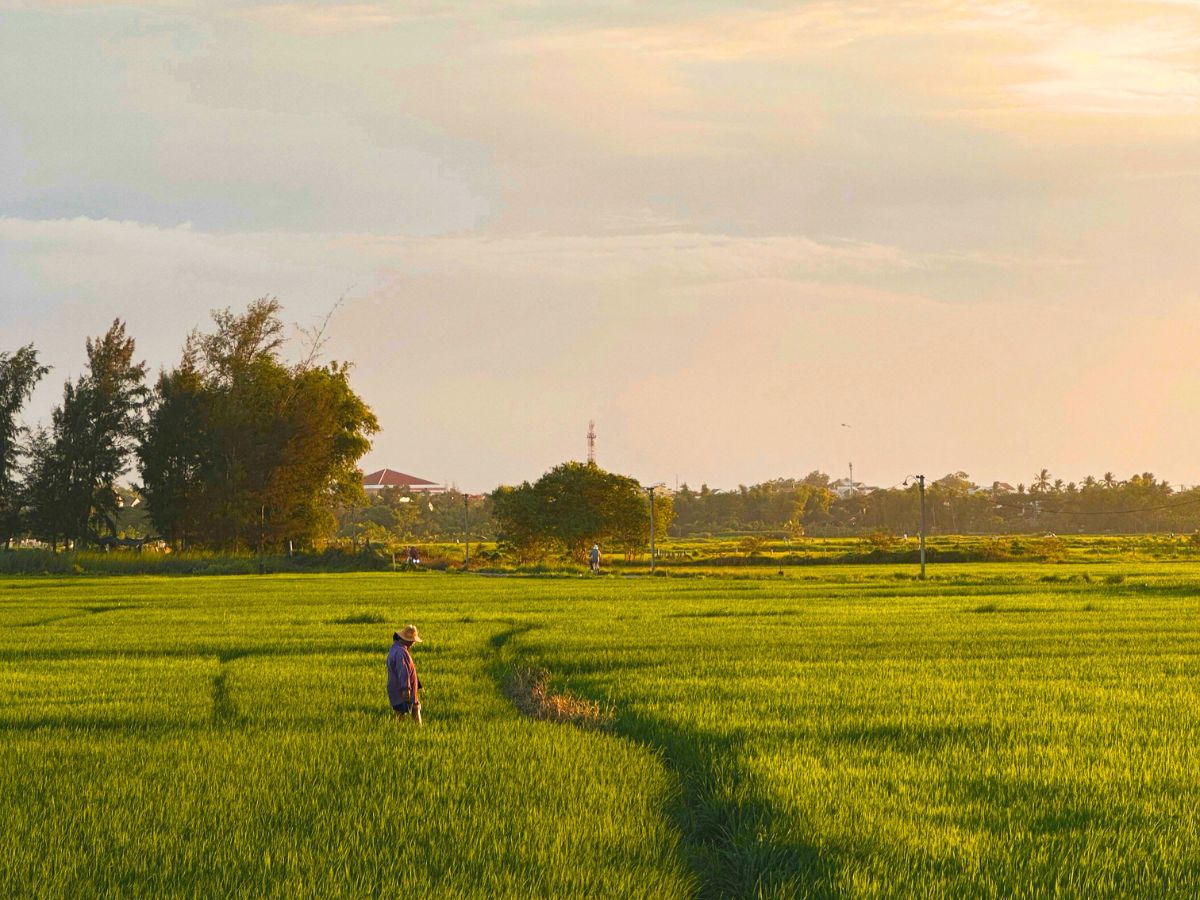
Why Hoi An Rice is So Popular and Tasty
Hoi An’s rice isn’t just beautiful to look at — it’s known for its exceptional quality and flavor, deeply connected to the land and the people who farm it.
According to Hoi An Eco Travel, the rice here is prized for its round, even, and slightly sticky grains, a result of the region’s favorable natural conditions — fertile soil, abundant water from the Thu Bon River, and a warm, stable climate. These factors work together to produce rice that’s both fragrant and full-bodied in texture.
What also makes Hoi An rice special are the traditional farming methods that many local farmers still use today. Instead of relying entirely on modern machinery, you’ll still see water buffaloes tilling the fields and families working together by hand. These slower, more sustainable methods preserve the soil’s health and create a product with what locals call a “hometown flavor” — natural, rich, and deeply tied to the community’s heritage. It’s no wonder Hoi An’s rice forms the foundation for some of the region’s best-loved dishes.
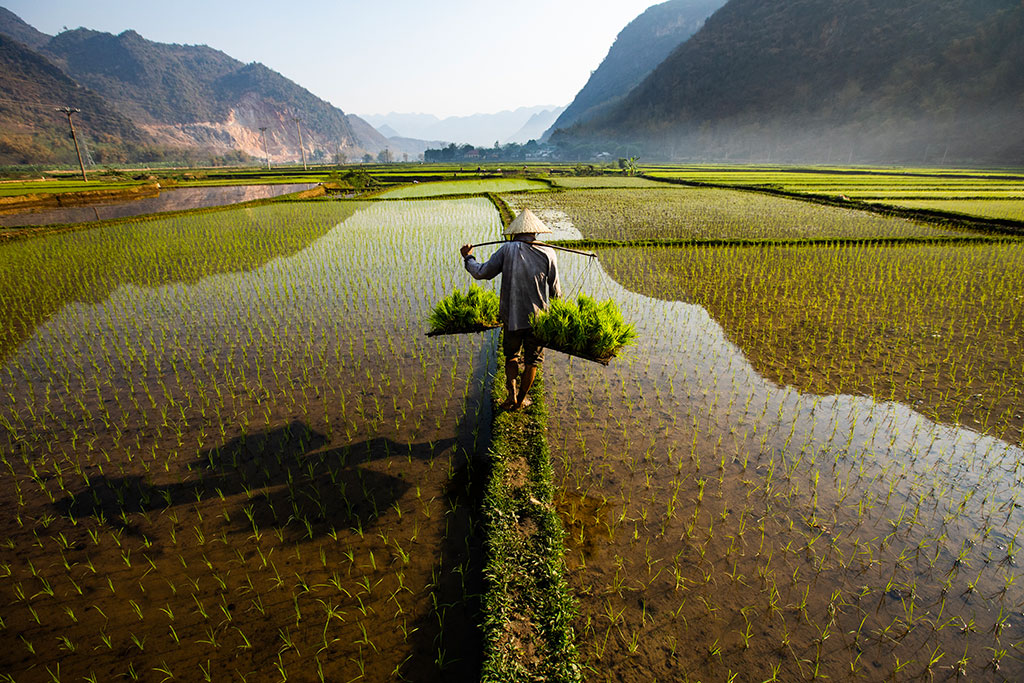
Top 3 Bar and Cafe Spots with a Rice Field View
Hoi An’s rice paddies aren’t just for photos — they’re perfect for slowing down with a cocktail or coffee in hand. Here are three must-visit bar and cafés where you can enjoy the view:
1. tok Bar and Restaurant
Surrounded by Hoi An’s serene rice fields, tok Bar is where creativity meets calm. Their menu serves up unique, inventive dishes alongside delicious brunch options and perfectly mixed cocktails. Come early for a lazy daytime meal, then stay for sunset — when the drinks flow, the music kicks in, and the rice fields glow in golden light.
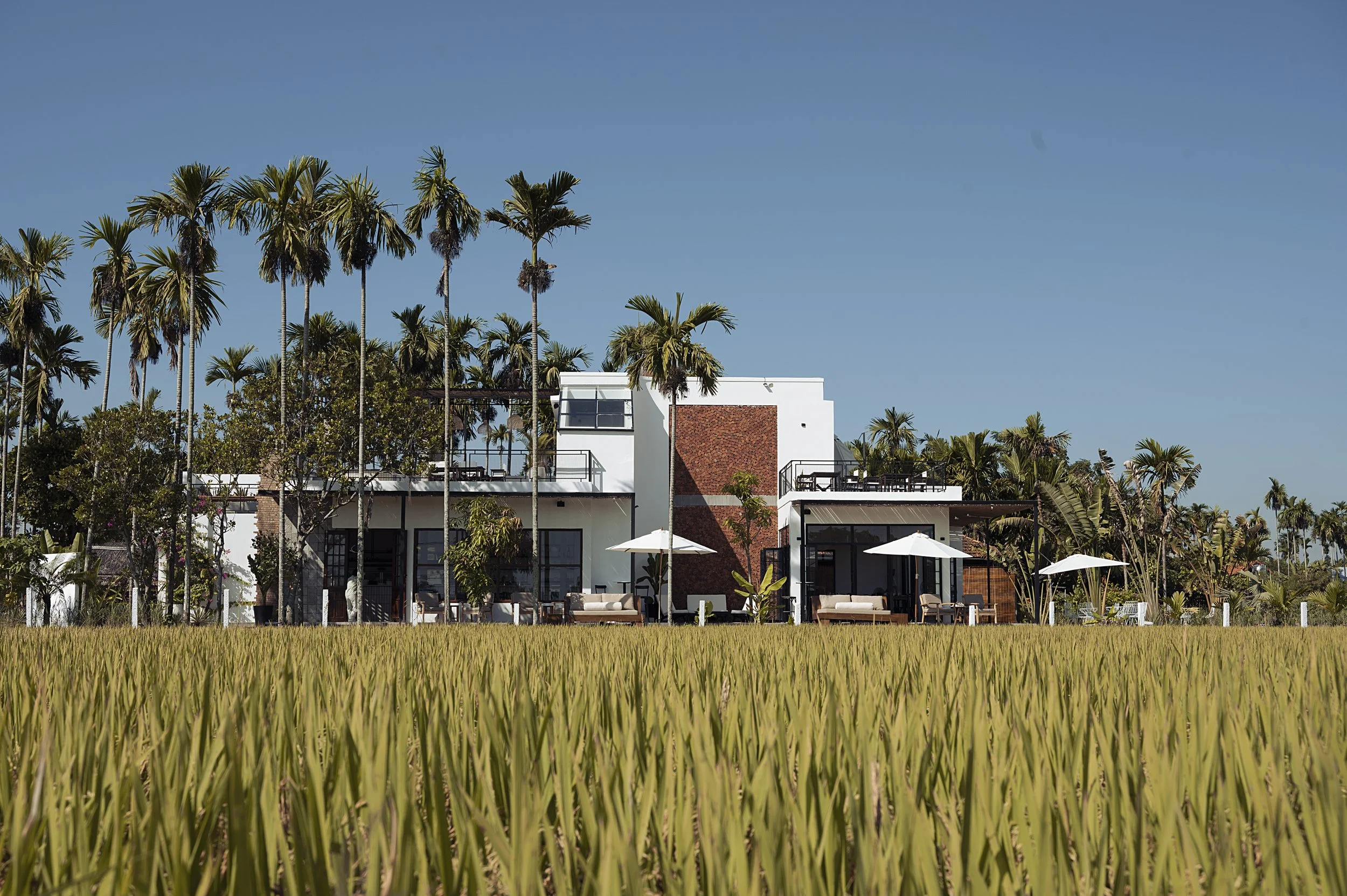
2. Roving Chill House
Set right in the middle of the rice fields, Roving Chill House is a hidden gem. With hammocks, bamboo seating, and sweeping views, it’s a favorite among locals and backpackers alike. Their Vietnamese coffee and smoothies are simple but refreshing, and it’s one of the best spots to escape the heat.
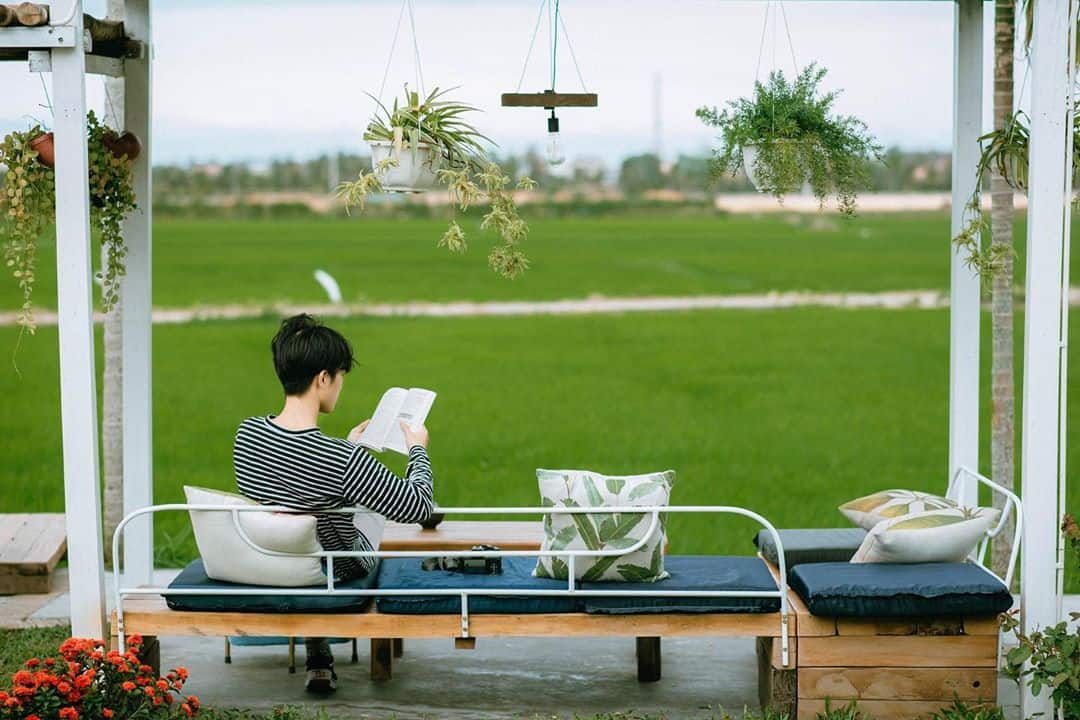
3. Le Locust Café
Just off Cửa Đại Road, Le Locust Café offers a peaceful terrace overlooking the fields. Enjoy a coconut coffee or a fresh juice, and watch the colors of the paddies shift with the light. It’s a quiet, cozy stop for travelers looking to take it slow.
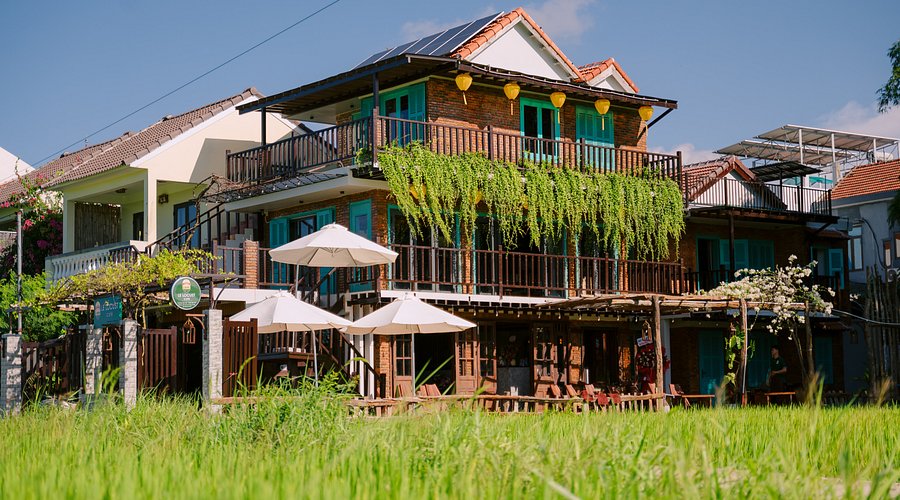
Explore the Countryside with the FUSE Bike Tour
For travelers looking to experience the rice fields up close, the FUSE Hostels Bike Tour is one of the must-do experiences in Hoi An. This guided tour takes you through backroads, local villages, and the heart of the rice paddies. You’ll meet traditional farmers, see local crafts like “bean sprouts in sand,” and get a deeper understanding of daily life in central Vietnam.
Even better — after the tour, you can use the bike all day for free. Take your time exploring more of the town, stop at hidden cafés, or simply ride wherever the road takes you.
Whether you’re a solo traveler or exploring with friends, it’s a fun, social, and scenic way to see Hoi An beyond the ancient town streets.
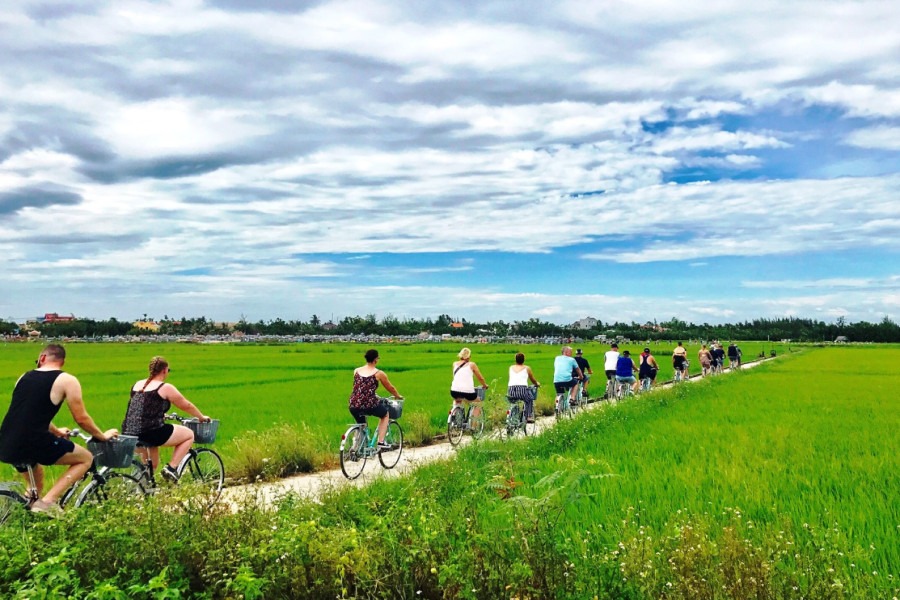
Where to Stay – FUSE Hostels & Travel
If you’re wondering where to stay in Hoi An, FUSE Hostels has two great locations that let you experience the best of both worlds — the charm of the Ancient Town and the relaxed vibe of the beach.
FUSE Old Town
Stay close to Hoi An’s Ancient Town, markets, and local food spots. From here, you can easily join any of FUSE’s signature experiences — the Bike Tour, Street Food Tour, Sunset River Cruise, or Bamboo Boats & Cooking Class. It’s the perfect base for travelers who want to explore the cultural heart of Hoi An.
FUSE Beachside
Located near An Bang Beach, FUSE Beachside offers a laid-back coastal escape with everything you need for a comfortable stay — a pool, bar, and beach access just steps away. Guests can join the same FUSE tours from here, with a free daily shuttle connecting the Beachside and Old Town hostels.
Wherever you stay, you’ll also enjoy a 20% discount on all brunch orders at Barefoot Beach Club, FUSE’s beachside restaurant known for its tropical drinks and signature dishes — perfect after a morning bike ride or a relaxed day in the sun.
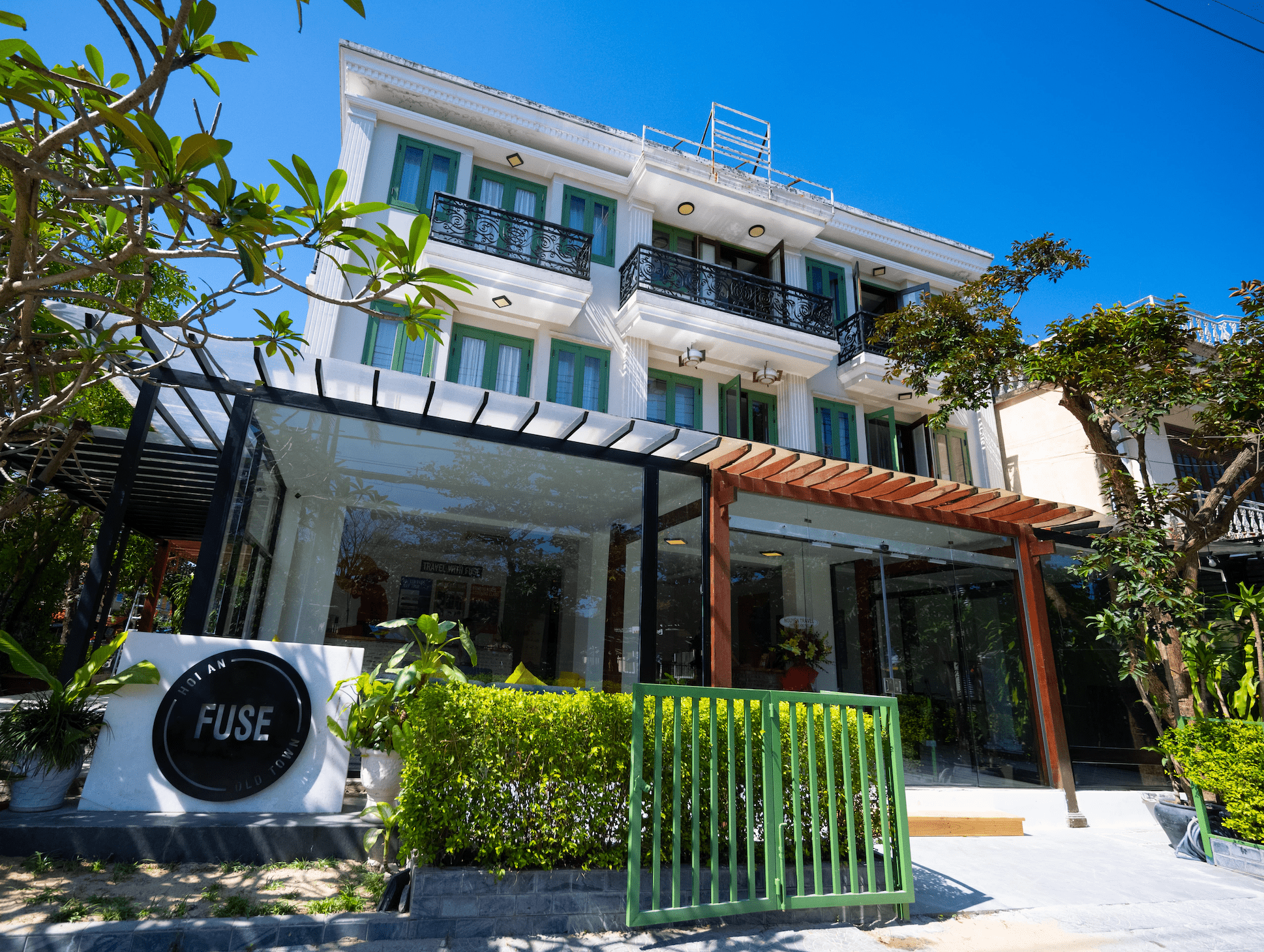
Taste the Rice – Local Dishes to Try
Hoi An’s rice isn’t just a landscape — it’s the heart of local cuisine. Here are a few dishes made from locally grown rice you shouldn’t miss:
- Cơm gà Bà Bảy – Chicken Rice - Famous for its fragrant rice cooked in chicken broth, served with shredded chicken, herbs, and chili jam.
- Barefoot Beach Club – Special Fried Rice – Char siu pork, king prawns, pak choi, egg, and sweet-and-spicy sauce, with a vegetarian option available.
- Claypot Hoi An – Braised Pork in Claypot – A comforting local dish with slow-cooked pork over warm, freshly steamed rice.
Each of these dishes highlights the natural flavor and texture of Hoi An’s homegrown rice.
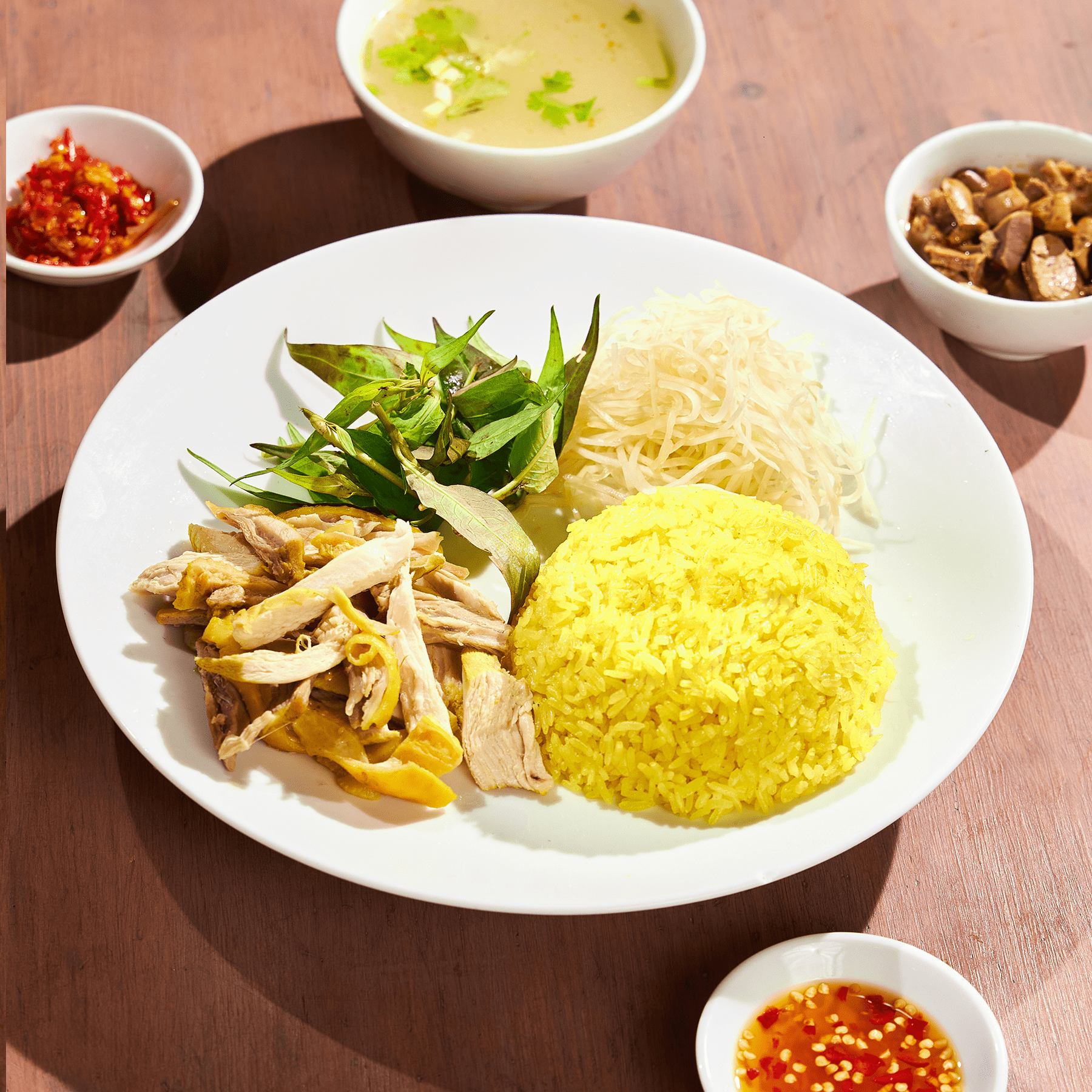
Final Thoughts
Hoi An’s rice fields are more than a pretty backdrop — they tell the story of a community that still lives in rhythm with nature. Whether you visit during the green season or the golden harvest, you’ll find a slower, more authentic side of Vietnam waiting for you.
So grab a bike from FUSE Hostels, find your favorite café among the paddies, and enjoy the view — because Hoi An isn’t just a place to see. It’s a place to feel, taste, and remember.
Related Travel Guides
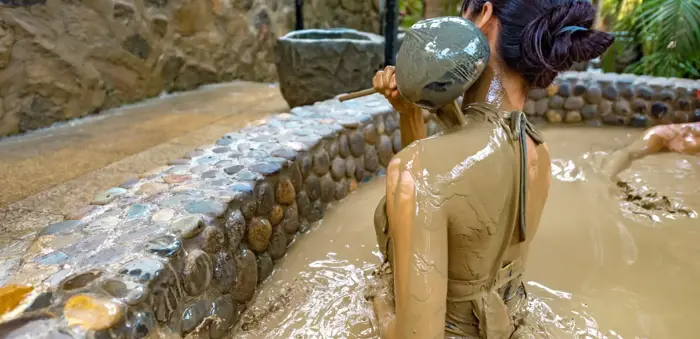
Experience the famous mineral mud baths of Nha Trang, where volcanic mud and hot springs create a spa experience like no other. Learn about the benefits, cultural roots, and join FUSE Nha Trang’s all-inclusive mud bath tour—complete with swimsuit, drink, towel, transportation, and lockers.
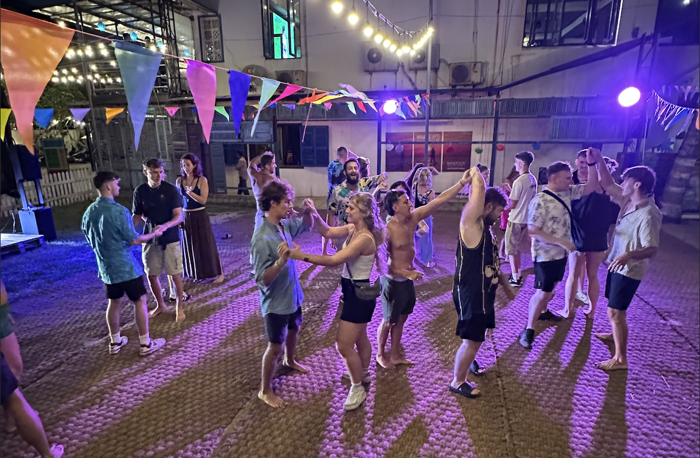
From samba in the streets to a wild pool party by the beach, the FUSE Carnival transformed Hoi An into a vibrant celebration of music, dance, and unforgettable party vibes.

Vietnam now offers 45-day visa-free entry to citizens of 25 countries. This travel guide highlights the new visa policy and the best places to visit, from Hanoi and Sapa to Hoi An, Da Nang, and Nha Trang.
